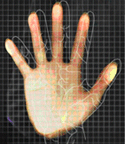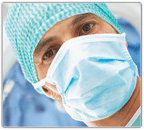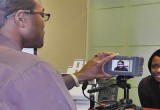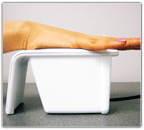Carolinas Healthcare reports nearly non-existent failure rate with palm vein scans
13 April, 2016
category: Biometrics, Health
 It’s been nearly a decade since the Carolinas HealthCare System (CHS) deployed a patient-matching biometric program that uses palm vein scanning. The company began with Fujitsu PalmSecure in 2007, and that has evolved in the market to Imprivata‘s PatientSecure. CHS even created the original cradle that holds the scanner so the palm is not touching it.
It’s been nearly a decade since the Carolinas HealthCare System (CHS) deployed a patient-matching biometric program that uses palm vein scanning. The company began with Fujitsu PalmSecure in 2007, and that has evolved in the market to Imprivata‘s PatientSecure. CHS even created the original cradle that holds the scanner so the palm is not touching it.
“Infrared light waves scan the patient’s vein patterns. That produces, through an algorithm, a unique identifier that identifies a person’s longitudinal electronic health records (EHR),” says Craig Richardville, senior vice president and CIO at the system. “This is standard at all CHS access-to-care locations – acute and ambulatory.”
CHS reports a 70% reduction in check-in time, and 99.9% of its patients are correctly matched to their EHR’s. Patients simply give their date of birth and scan their palm for identification. “The need for linking the patient to the correct medical record has never been more important,” Richardville says. “We wanted a more immediate, efficient, and accurate method to ID all patients and all conditions.”
Before choosing palm vein, CHS found biometric options like iris scan and fingerprint to be too expensive and invasive or just not accurate enough. “We saw the palm vein scan mentioned in a Popular Mechanics magazine as a way to fight fraud at ATM’s. We thought we could use that for patients,” Richardville says. “The palm vein structure is more unique to you than your fingerprint. It’s as unique as a snowflake. The program calculates a unique identifier based on how many veins are present, the direction they flow, and their placement relative to one another.”
CHS says this program prevents scanned palm data from being tampered with or stolen. No images need to be used or stored, and there’s no longer a need to copy and send patient information between EHR’s. Multiple patient files are reduced to just one record per patient, all but eliminating the duplication of medical records.
“Once educated, our patients understand and have clearly adopted the palm scanner,” Richardville says. “While it is voluntary, 99% of our patients have chosen to use it for patient safety.”



